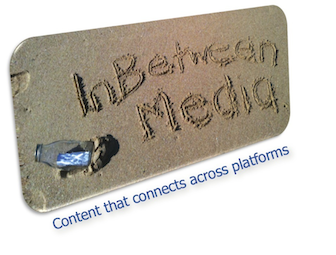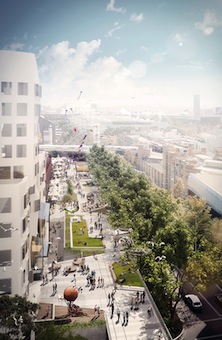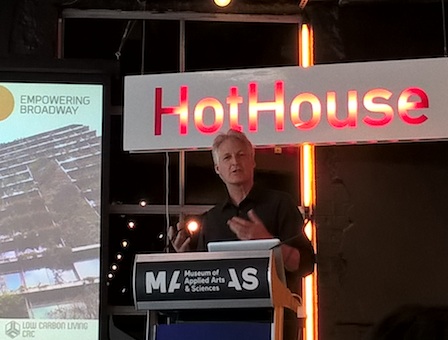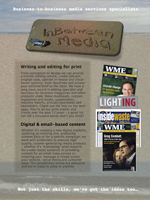HotHouse lived up to its name on 12 August at Sydney’s Museum of Applied Arts & Sciences (formerly the Powerhouse Museum) – as a means of cultivating and fast-tracking ideas – by bringing together a diverse group of people to consider the idea of sustainable neighbourhoods.
Following on from the first of the new format HotHouse LABs on buildings, this event hosted by the Total Environment Centre for its Smart Locale Ultimo-Pyrmont initiative was designed to bring together local organisations and businesses to talk about the benefits of working with their neighbours. The primary benefit is in being able to plan and use infrastructure and resources together in a way the preserves their environment; balances the needs of all inhabitants; and costs less.
It’s based on the knowledge that a dynamic, bustling, sustainable neighbourhood, with lots of green space and an array of smart, active transit options is a great place to live, work in and visit. It also supports a happy, healthy and productive workforce and encourages a thriving local economy.
HotHouse focused on four areas: engaging public space development; green spaces; sustainable transport; and waste reduction.
Stuart White from the Institute for Sustainable Futures talked about the progress being made in the Empowering Broadway initiative that is exploring how linking commercial business, residential and mixed-use developments into precincts makes it possible to share the costs of asset upgrades and fund local sustainable water and energy networks.
Part of the Cooperative Research Centre for Low Carbon Living, the project makes Broadway a ‘living laboratory’ capable of providing an evidence-base for a more efficient approach to urban growth that can be rolled out nationally and even internationally.
Another project eagerly anticipated is The Goods Line, undertaken by Sydney Harbour Foreshore Authority (SHFA). While Cathy Levins-Byres from SHFA couldn’t confirm the exact date of opening, it is “within weeks” she assured the audience.
This project has transformed a disused rail corridor into a new pedestrian and cycle network, which will now extend from Railway Square (Central) into Ultimo. In the process, SHFA collaborated extensively with stakeholders in the neighbourhood to develop the project which had a significant focus on ‘placemaking’; including spaces for pop-up events with a series of elevated platforms that can be used for public entertainment, recreation, study and other activities.
The Goods Line expects to connect more than 80,000 tertiary students, locals and visitors to Sydney’s Darling Harbour as well as arts, education and cultural institutions along Sydney’s ‘cultural ribbon’.
Following the presentation from Cathy Levins-Byres – and this is where the HotHouse LABs differ from your average lecture – attendees were asked to brainstorm how a number of hypothetical local people could engage with The Goods Line. These mini ‘think tanks’ continued throughout the evening, producing some remarkable and fascinating ideas.
One group suggested using some areas as ‘outdoor boardrooms’ and the opportunity this presented for business people to document their sun-drenched meetings on the lawns of The Goods Line on social media. For people with children, there could be numerous temporary attractions (including free sausages!), as well as pop-up food carts. Many groups suggested ways to engage local businesses, such as cafes, printers and digital agencies, at The Goods Line. They almost all had two things in common; providing useful services to users of The Goods Line coupled with sustainability messaging. For instance, the use of recyclable/reusable cups, bike generated electricity, or free apps that promote walking and cycling; swap’n’go solar battery banks for digital devices.
Of course one of the biggest pieces of infrastructure alongside The Goods Line is the Museum of Applied Arts & Sciences itself. The Museum’s Michelle Washington, with the interesting title of ‘Head of Infrastructure Engagement’, explained to the audience how the organisation was focused on moving its activities ‘outside’ and utilising its exterior spaces to take its collections to the community.
What was clear throughout the presentations from various speakers and audience input was that developing precinct-scale infrastructure and services fosters community ties. Furthermore, through collaborative consumption tools people have the ability for greater engagement with each other, with local businesses and ultimately with decision makers, to create places that are better for the people who live there. Of course, they attract more visitors as well.
This movement can be seen not only in the explosion of collaborative consumption or share economy initiatives in Australia, but in developments like the City of Melbourne’s ‘People’s Panel’. Late last year a group of 40 randomly chosen people were invited to come up with priorities on spending and revenue for council. Council then adopted all their recommendations that named sustainability as a key priority and suggested ripping up roads and parking spots for bike lanes; more open space; and increasing rates to pay for it all.
HotHouse attendees let their imaginations tell them what kinds of spaces they’d like to ‘green’ in Sydney if they had the chance. They ranged from elaborate plans including cascading waterfalls, yoga lawns and edible gardens covering the length of Martin Place; to recreational spaces atop Australia Square.
One novel idea was not actually a place but rather a fixture. One group decided to take the ubiquitous public toilet and transform it into a tranquil and pleasant space that could be supplanted into any urban environment you choose to name.
While some may have already known about the projects and initiatives presented at HotHouse, it provided a rare opportunity for participants to envisage how they could have a positive impact on their neighbourhoods and, even if only for a few hours, to take city governance into their own hands.
For more information on HotHouse LABs Neighbourhood visit: www.hothouse.org.au/ – !neighbourhood/cyie
For more information on Smart Locale visit: www.smartlocale.com.au




Comments are closed.